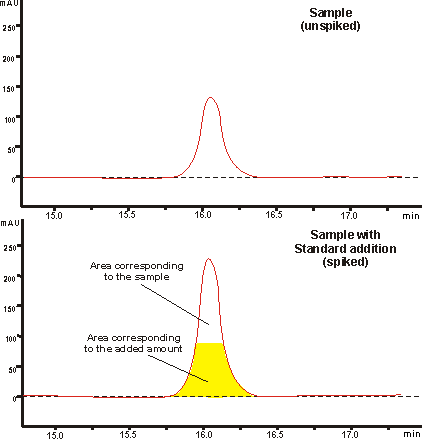|
How to perform Standard addition quantitation

|
The
table below describes briefly how Standard
addition quantitation is performed.
|
Step
|
Action
|
|
1
|
Perform a sample run.
|
|
2
|
Perform a second run with a sample that has been spiked
with a known quantity of the component of interest prior to the
sample preparation.
See illustration below:

|
|
3
|
Perform peak integration on both curves in the Evaluation module to produce a
peak table for both the spiked and the unspiked sample.
Result: The difference
in peak area between the spiked and the unspiked sample represents
the peak area from the added amount.
|
|
4
|
With the assumption of a linear proportionality between
the peak area and amount, and with the added amount known, the software
calculates the amount of the component of interest in the sample:

|
|
